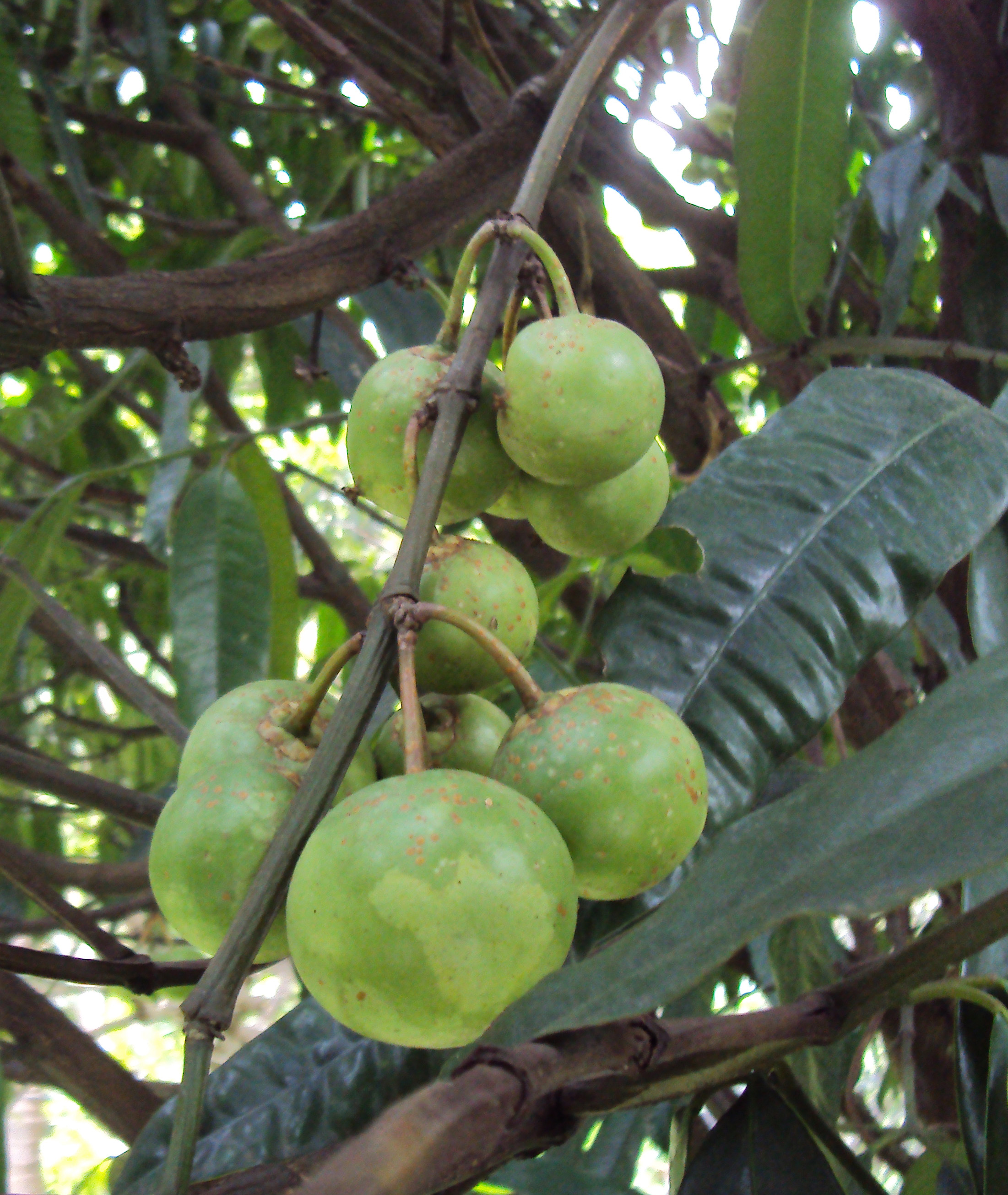|
List Of Clusiaceae Genera
The family Clusiaceae was divided by Cronquist into 2 subfamilies: the Clusioideae (typical subfamily) and the Hypericoideae. The latter was often treated as a family - the Hypericaceae or St. John's wort family. Elements of the Hypericoideae are more common in North temperate areas and those of the Clusioideae are centered in the Tropics. Later classifications however divide the family in a finer way. The taxonomy below mostly follows that of Stevens. Molecular studies have shown that the family Podostemaceae - the riverweeds - as well as the Theaceae-segregate Bonnetiaceae need to be included in this group. Their inclusions make Clusiaceae in a wide-sense polyphyletic, and Stevens's subfamilies need to be recognised at family level: Clusioideae as Clusiaceae sensu stricto; Hypericoideae as Hypericaceae; and Kielmeyeroideae as Calophyllaceae.APG III (2009) Subfamily Clusioideae :Tribe Clusieae ::*''Chrysochlamys'' (''Balboa'', ''Tovomitopsis'') ::*''Clusia'' (''Androstylium'' ... [...More Info...] [...Related Items...] OR: [Wikipedia] [Google] [Baidu] |
Clusiaceae
The Clusiaceae or Guttiferae Juss. (1789) (''nom. alt. et cons.'' = alternative and valid name) are a family of plants including 13 genera and ca 750 species. Several former members of Clusiacae are now placed in Calophyllaceae and Hypericaceae. They are mostly trees and shrubs, with milky sap and fruits or capsules for seeds. The family is primarily tropical. More so than many plant families, it shows large variation in plant morphology (for example, three to 10, fused or unfused petals, and many other traits). According to the APG III, this family belongs to the order Malpighiales. One feature which is sometimes found in this family, and rarely in others (e.g., Malpighiaceae), is providing pollinators with rewards other than pollen or nectar; specifically, some species offer resin which bees use in nest construction (all three rewards are found in different species of the Clusiaceae). Taxonomic history The family Clusiaceae was divided by Cronquist into two subfamil ... [...More Info...] [...Related Items...] OR: [Wikipedia] [Google] [Baidu] |
Garcinia
''Garcinia'' is a genus of flowering plants in the family Clusiaceae native to Asia, America, Australia, tropical and southern Africa, and Polynesia. The number of species is disputed; Plants of the World Online (POWO) recognise up to 400. Commonly, the plants in this genus are called saptrees, mangosteens (which may also refer specifically to '' Garcinia mangostana''), garcinias, or monkey fruit. Many species are threatened by habitat destruction, and at least one species, '' G. cadelliana'', from South Andaman Island, is almost or even completely extinct already. The fruits are a food source for several animals, such as the archduke butterflies (''Lexias'' spp.) of tropical eastern Asia which relish the sap of overripe mangosteens. The genus is named after French botanist Laurent Garcin (1683–1751). Description ''Garcinia'' species are evergreen trees and shrubs, dioecious and in several cases apomictic. The fruit is a berry with fleshy endocarp, which in several ... [...More Info...] [...Related Items...] OR: [Wikipedia] [Google] [Baidu] |
Pentadesma
''Pentadesma'' is a genus of flowering plants belonging to the family Clusiaceae. Its native range is Western and Western Central Tropical Africa. Species Species: *''Pentadesma butyracea'' *''Pentadesma exelliana'' *''Pentadesma grandifolia'' *''Pentadesma lebrunii'' *''Pentadesma reyndersii ''Pentadesma'' is a genus of flowering plants belonging to the family Clusiaceae. Its native range is Western and Western Central Tropical Africa. Species Species: *''Pentadesma butyracea'' *''Pentadesma exelliana'' *''Pentadesma grandifolia ...'' References {{Taxonbar, from=Q3012029 Clusiaceae Malpighiales genera ... [...More Info...] [...Related Items...] OR: [Wikipedia] [Google] [Baidu] |
Lorostemon
''Lorostemon'' is a genus of flowering plants belonging to the family Clusiaceae. Its native range is Southern Tropical America. Species: *''Lorostemon bombaciflorus'' *''Lorostemon coelhoi'' *''Lorostemon colombianus'' *''Lorostemon negrensis'' *''Lorostemon stipitatus ''Lorostemon'' is a genus of flowering plants belonging to the family Clusiaceae. Its native range is Southern Tropical America. Species: *''Lorostemon bombaciflorus'' *''Lorostemon coelhoi'' *''Lorostemon colombianus'' *''Lorostemon negren ...'' References {{Taxonbar, from=Q10319778 Clusiaceae Malpighiales genera Taxa named by Adolpho Ducke ... [...More Info...] [...Related Items...] OR: [Wikipedia] [Google] [Baidu] |
Dystovomita
''Dystovomita'' is a genus of flowering plants belonging to the family Clusiaceae. Its native range is Central and Southern Tropical America. Species: *''Dystovomita clusiifolia'' *''Dystovomita paniculata ''Dystovomita'' is a genus of flowering plants belonging to the family Clusiaceae. Its native range is Central and Southern Tropical America. Species: *''Dystovomita clusiifolia ''Dystovomita'' is a genus of flowering plant Flowering pl ...'' References {{Taxonbar, from=Q3764359 Clusiaceae Malpighiales genera ... [...More Info...] [...Related Items...] OR: [Wikipedia] [Google] [Baidu] |
Allanblackia
''Allanblackia'' is a genus of flowering plant in the family Clusiaceae. Molecular phylogenetic analyses indicate that is it nested in the dioecious ''Garcinia''. The genus name commemorates Allan Black. It contains the following species: * ''Allanblackia floribunda ''Allanblackia floribunda'', known in English as 'tallow tree', is a species of flowering plant in the family Clusiaceae that has been long used in traditional African medicine to treat hypertension. It is a common understory tree in rainforests i ...'' (Nigeria to DR Congo and Angola) * '' Allanblackia gabonensis'' * '' Allanblackia kimbiliensis'' * '' Allanblackia kisonghi'' * '' Allanblackia marienii'' * '' Allanblackia parviflora'' (Upper Guinea, from Ghana westwards) * '' Allanblackia staneriana'' * '' Allanblackia stuhlmannii'' (Eastern arc mountains -Usambara Tanzania) * '' Allanblackia ulugurensis'' (Eastern arc mountains -Uluguru Tanzania) Uses Allanblackia can be processed into Allanblackia oil R ... [...More Info...] [...Related Items...] OR: [Wikipedia] [Google] [Baidu] |
Symphonia (plant)
''Symphonia'' is a genus of tropical woody plants, specifically trees in the family Clusiaceae. The genus has its diversity center in Madagascar and one species (''Symphonia globulifera'') disjunct in the Afrotropic and the Neotropic in the Amazon Rainforest. Because of this particular distribution pattern, the origin of the genus is controversial: two hypotheses have been proposed, one suggesting an Amazon origin, the other a Madagascar origin. Species , The Plant List accepts 15 species: *'' Symphonia eugenioides'' Baker *'' Symphonia fasciculata'' (Noronha ex Thouars) Vesque *''Symphonia globulifera ''Symphonia globulifera'', commonly known as boarwood, is a timber tree abundant in Central America, the Caribbean, South America and Africa. This plant is also used as a medicinal plant and ornamental plant. Common names Common trade names of t ...'' L.f. *'' Symphonia gymnoclada'' (Planch. & Triana) Benth. & Hook.f. ex Vesque *'' Symphonia lepidocarpa'' Baker *'' Symphon ... [...More Info...] [...Related Items...] OR: [Wikipedia] [Google] [Baidu] |
Montrouziera
''Montrouziera'' is a genus of shrubs to large trees in the family Clusiaceae, endemic to New Caledonia. As usual in the Clusiaceae, species of this genus are known to contain xanthonoids. ''Montrouziera'' is related to the South American genus '' Platonia''.Ruhfel, B. R., V. Bittrich, C. P. Bove, M. H. G. Gustafsson, C. T. Philbrick, R. Rutishauser, Z. Xi, and C. C. Davis (2011). Phylogeny of the Clusioid Clade (Malpighiales): Evidence from the Plastid and Mitochondrial Genomes. American Journal of Botany 98: 306–25. Locally known as "houp", this genus was named after Xavier Montrouzier. ''Montrouziera gabriellae ''Montrouziera'' is a genus of shrubs to large trees in the family Clusiaceae, endemic to New Caledonia. As usual in the Clusiaceae, species of this genus are known to contain xanthonoids. ''Montrouziera'' is related to the South American genus ' ...'' is noted for bearing the largest endemic flower of New Caledonia. References {{Taxonbar, from=Q5645404 En ... [...More Info...] [...Related Items...] OR: [Wikipedia] [Google] [Baidu] |
Platonia
''Platonia insignis'', the sole species of the genus ''Platonia'', is a tree of the family Clusiaceae native to South America in the humid forests of Brazil, Paraguay, parts of Colombia and northeast to Guyana; especially in Amazon Rainforest. Common names include bacuri (and numerous variant spellings thereof; bacurí, bacury, bakuri, pacuri, pakuri, pakouri, packoeri, pakoeri), maniballi, naranjillo and bacurizeiro. There was a degree of nomenclatural confusion, caused by ''Moronobea esculenta''. If that were validly published for this species the current name would be ''Platonia esculenta''. It was established that ''Moronobea esculenta'' is not a formal name (not "validly published"), so the name remains ''Platonia insignis''. ''Platonia'' is related to ''Montrouziera'' from New Caledonia. Description ''Platonia insignis'' is a dry-season deciduous tree, reaching 25–40 m high. It has a pyramidal crown and copious yellow latex in the bark. The leaves are opposite, si ... [...More Info...] [...Related Items...] OR: [Wikipedia] [Google] [Baidu] |
Moronobea
''Moronobea'' is a plant genus of the family Clusiaceae. They are glabrous medium to large trees with yellow latex. The genus comprises 7 species, native to South America, 5 of which are in Venezuela. It is related to '' Platonia'' and ''Montrouziera''.Ruhfel, B. R., V. Bittrich, C. P. Bove, M. H. G. Gustafsson, C. T. Philbrick, R. Rutishauser, Z. Xi, and C. C. Davis (2011). Phylogeny of the Clusioid Clade (Malpighiales): Evidence from the Plastid and Mitochondrial Genomes. American Journal of Botany 98: 306–25. The resinous latex of '' Moronobea coccinea'' and '' Moronobea riparia'' has been widely used by Amerindians for caulking, as a mastic Mastic may refer to: Adhesives and pastes *Mastic (plant resin) *Mastic asphalt, or asphalt, is a sticky, black and highly viscous liquid * Mastic cold porcelain, or salt ceramic, is a traditional salt-based modeling clay. *Mastic, high-grade con ..., and burned as a source of light. References Clusiaceae Malpighiales genera [...More Info...] [...Related Items...] OR: [Wikipedia] [Google] [Baidu] |




